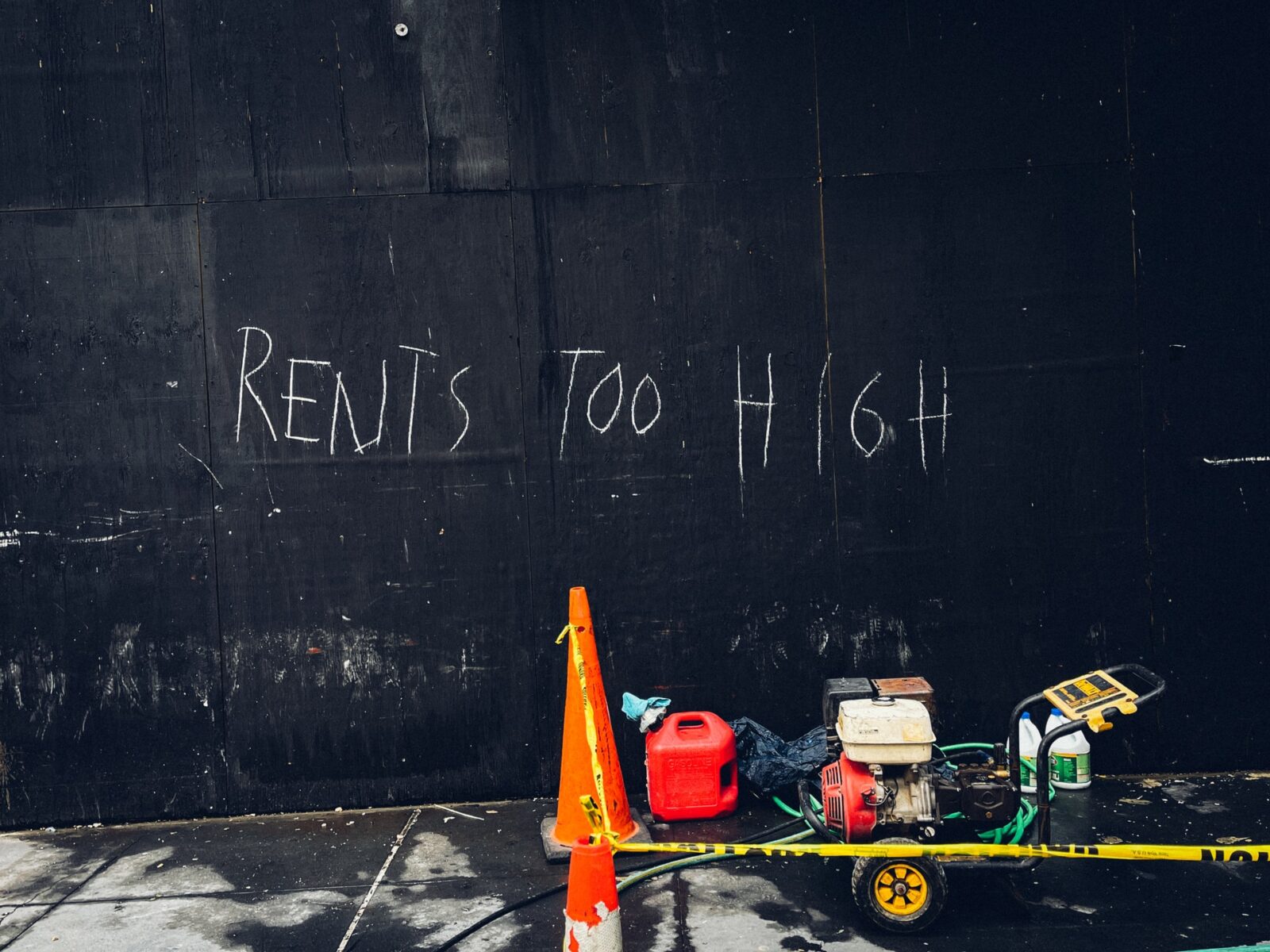Rental Property Value Calculator
So you’re considering investing in a rental property? One of the most important factors to account for before you begin is the profitability of your investment.
When you know whether or not your investment will generate the returns you seek over the term you wish to invest for, you will better understand whether it’s worthwhile moving forward with your property choice or heading back to the market.
But these critical calculations are also a step where many real estate investors become vulnerable to numerical slip-ups, which can detrimentally affect the outcomes of their investments.
So we’ve made this post to offer deeper insights into the various approaches investors use to determine the value of their rental property. This includes the rental property value calculator, which has been specially designed to guide your calculations and to support you to your end goals.
Not all Investment Properties are Made Equal
Many of us seek to achieve specific financial and lifestyle goals through an investment property – and rightly so! Rental property investments are one of the most profitable and stable physical assets you can own.
Factors such as the location and the market conditions you choose to invest in can significantly impact your bottom line and are worth taking into account.
Certain commercial leases can also get you better value for your investment. Take triple net (or NNN) leases, for example. These pass the majority of investment property operating expenses and maintenance costs on to the tenant. Not only does this significantly decrease the investor’s outgoing expenses to make the property considerably more profitable over the long term, but it saves the landlord a substantial amount of time in management responsibilities.
If you want to get the best value from your commercial rental property with an NNN lease, get in touch with the experts at NNN Deal Finder today.
Keep in mind the end goal you aspire towards as you browse this post and learn about the income potential of your new venture.
How do You Calculate the Value of a Rental Property?
There are several questions investors face before they invest capital into a property. Many of them address the purchase price, the maintenance costs, and the cash-on-cash return. Determining the cost of a property and the returns you will see are just as important as knowing the property value.
When evaluating the numbers for any investment, there is no one-size-fits-all approach. In fact, you will likely need to use a combination of factors to make the smartest investment decisions. Here is a list of common ways investors figure out the value of their rental property investing project.
Rental Property Calculator
A rental property calculator is a tool used to support investors in making quick and accurate calculations accounting for a diverse range of factors relating to their rental property investment.
It’s easy to use and one of the fastest and least mentally laborious ways to determine the value of your rental property.
Investors enter the numbers into the specified fields, then the calculator’s algorithm interprets this information to display results about the investment in relation to the property and the individual’s investment goals.
The more information you can provide, the more accurate the outcomes you will get. Some of the information you can enter into the rental property calculator include:
- Purchase price
- Loan details, including terms, interest rates, and down payment
- Closing costs
- Recurring operating expenses, including taxes, insurance, maintenance, and other costs
- Income, including monthly rental income, vacancy rates, management fees, and annual increases
- Sale information, including total sales price (if known), annual appreciation, holding length, and cost to sell
Results provide a breakdown of certain economic factors such as the internal rate of return (IRR), net operating income (NOI), and cash-on-cash-returns. These help you determine whether the rental property is an appropriate vessel to carry you towards your financial goals.
In a short timeframe, you can see a summary of your projected incomes and expenses for the first year and the whole term of your investment. The summary also outputs an annual breakdown of these instruments.
The calculator does not require that you fill all of the fields, however as with all value calculation tools, the more details you can provide, the more accurate the results will be.
Sales Comparison Approach (SCA)
The SCA is widely utilized by appraisers and real estate agents when they evaluate properties. The approach compares real estate that is rented or recently sold over a given timeframe.
The SCA assigns a price value based on features and general attributes of the commercial rental property. Appraisers tend to rely on uniform metrics such as the price per square foot or recent sale price to determine the value of the real estate in question.

By performing a sales comparison approach, investors can perform a simple and accessible evaluation of the property. However, the SCA often neglects the unique and distinctive characters of the property such as location, additional amenities, and the tenant’s financial credibility.
This approach is commonly used to measure the current market value against comparable local commercial property values.
Capital Asset Pricing Model (CAPM)
The CAMP is a comprehensive appraisal model used to assess a commercial rental property value, including the risk and opportunity cost.
The model uses the return on investment (ROI) generated by rental income and compares it to other investments with zero risk, such as U.S Treasury Bonds or real estate investment trusts (REITs).
In essence, if the returns derived from rental income are less than the projected returns on a risk-free or guaranteed investment, it simply doesn’t make financial sense to undertake the risk associated with an investment property.
What Risks are Associated with my Investment Property?
There are several risks to consider when investing in property. For example, if you are investing in an older building, the likeliness of high and/or regular maintenance and repair costs may be present itself as a risk. This can be mitigated with a NNN lease, where a real estate investor is not required to fork out for those expenses.
If you are investing in a high-crime locality, the security of your asset may be at greater risk than if you were purchasing in a gated community.
This model can help you to assess risk before you commit to your investment, or when formulating a pricing structure. The CPAM can help you determine what sort of return you deserve for the degree of risk involved.
The Rental Income Approach
The income approach examines the potential rental income yield for a rental property investment with respect to the initial cash outlay used to purchase the real estate. This method is popular in the commercial real estate investing spheres.
This approach uses the annual capitalization rate (cap rate) of a property. The cap rate is determined by dividing the net operating income by the current value of your asset though you can also use the rental property value calculator to determine your property’s cap rate much faster.
In addition, the income approach is considered a simplified method because it doesn’t account for factors such as mortgage interest rates on your loan or value fluctuations based on inflation or market shifts.
This issue presents itself in instances like when you look at the cap rate during a year where your rental income was high. It wouldn’t give you an accurate depiction of your asset’s worth.
This approach can be useful as a general indicator when you are comparing several properties, though it may be wise to use it in conjunction with another method.
Gross Rent Multiplier Approach
The gross rent multiplier approach (GRM) determines the ratio of the price of a real estate investment to its annual income before accounting for operational expenses such as taxes, insurance, and utilities. In simple terms, the GRM indicates the number of years a property would require before it paid for itself in gross rental yield.
The drawback is that taxes, vacancy rates, insurance, and other operational expenses are taken for granted, so you do not necessarily gain a complete picture of your property’s value.
How to use the GRM Approach
Let’s say you’re looking at a property worth $600,000, and your projected annual gross rental income is $105,000. The math goes like this: $600,000 / $105,000 = 5.71. With the GRM, you can gain a ballpark estimation of how long it would take you to pay back your initial investment on gross rental income alone.
It’s important to distinguish between the GRM and the NOI. The NOI takes into account the property’s operational expenses, whereas the GRM does not. These instruments should be designated for the type of commercial lease you opt for, and likely operational expenses and repair costs you may encounter.

Consider that the average GRM will also vary depending on location. The GRM grading system may be helpful to use:
- Low GRM – usually an older property that will require repairs and maintenance
- Average GRM – a property constructed within the last 10-20 years that requires modifications such as energy-efficient upgrades or a new roof.
- Above-average GRM – a property that is a maximum of 10 years old, and requires moderate adjustments to prepare it for use.
- High GRM – A brand new turnkey property that’s ready to go upon the completion of the purchase.
The Cost Approach
The cost approach to evaluating property follows the school of thought suggesting a property is worth only what it can be reasonably used for. The estimation is determined by combining the land value with the depreciated value of improvements made to the property, such as a building, or landscaping.
While this method is effective for vacant land plots, it can provide critical insights for commercial rental properties when you look at zoning and location. For example, let’s say you have a fast-food franchisee located in a quiet farming district 25 miles from the nearest town. The best use of the land that will afford it the highest value would be to convert it to a farming plot rather than build a fast-food outlet.
Any area within a town or city is subject to radical change as time progresses, so this valuation approach is fitting for newer buildings rather than older ones.
What is a Fair Rental Value?
Fair rental value is the rental yield that can be received from a similar property in the same locality. This number is considered to cover reasonable rent for the building gained by the property investor and accounts for the variable expenses of renting.
There are two indicators you can use to determine a fair rental value for your investment.
The 1% Rule
The 1% rule in real estate investments makes a benchmark ratio between the price of the property against the gross income it produces. To pass the 1% rule a potential investment must generate a monthly rent greater than or equal to 1% of the purchase price.

So for example, if you purchase a property for $750,000 and the gross annual rent is $105,000 you can work out the monthly rent by: $105,000 / 12 = $8,750. Because your monthly rent is greater than 1% of the purchase price (which would be $7,500), the gross annual rental yield passes the 1% rule.
The 50% Rule
The 50% rule is a tool the real estate investor can use to determine the profitability of their commercial rental property.
As the name suggests, the rule entails subtracting 50% of the income generated by rent to account for typical rental property expenses. Should the operating expenses exceed 50% of the gross rent, the rent you are changing may be too low.
The type of commercial lease your property comes with will dictate whether this rule applies to you or not. For example, a NNN lease property investor is not required to cover the operational expenses of their rental property and therefore they benefit from the full rental yield of their investment, rather than just 50%.
What is Standard Rent Value?
Standard rent is a fixed value governed and regulated under the Rent Control Act. It means that a rental property owner should not expect higher rent than the established standard.
The Rent Control Act was passed in 1948 by the legislature and regulates price controls for rental properties which acts as a ceiling for the maximum standard rent a landlord can expect.
This legal framework is designed to protect both parties in a letting agreement and ensure that neither party’s interests are exploited by the other.

What are the Different Types of Rental Value?
While fair rent and standard rent may seem self-explanatory, there are several expressions you may come across when discussing rental value in economic terms. The total rental income on the rental value property calculator refers to the gross rent as outlined below though you may adjust this figure depending on the type of agreement you enter into with your tenants. Here are a few types of rental value you may run into with commercial rental properties.
Gross Rent
Gross rent is the total annual rental income as stipulated on the property lease. The gross rent refers to the combined value of monthly rental payments tenants and rental property owners agree upon over a year. This value may appear higher than net effective rent if the landlord offers an enticing deal such as one month rent-free, which results in the gross rent being paid over fewer months.
Net Effective Rent
When a lessee signs on to a lease, they agree to pay a dollar value each month. This is the gross rent. If the landlord has offered a free month at the beginning or end of the lease, the amount effectively paid each month will be lower than the gross rent. This is because the gross rent is for the entire effective period of the lease, divided by all months in the lease including the free ones.
For this reason, the gross rent value remains the same over the entire lease period, but the monthly rent will appear lower because it is spread over more months.
Actual Rent
The actual rent is the sum of money received by the rental property owner during a leasing period before concessions are applied. Concessions can also be known as rent discounts, write-offs, or tenant credit, and are rental adjustments made by the investor to the agreed rental rate.
These are particularly common during economic hardship, such as the pandemic, and concessions are often followed by periods of higher rent. Neither of these values usually represents the actual rent.
Final Thoughts
There are many ways property appraisers, real estate agents, and investors can determine the value of a property. Most of the different techniques offer one perspective on the value of rental properties, and more often than not, they require complex math.
The rental property value calculator is one of the simplest, fastest, and most comprehensive property value systems for investors to determine the value of their property and whether or not it will meet their financial goals. To make the best investment decisions, use the calculator to guide your rental and property value projections in conjunction with any other valuation method that applies to your property.The knowledgeable and experienced team at NNN Deal Finder is here to help you get the best value out of your real estate rental property investment with NNN leases. If you want to learn more about your rental property’s value, contact the experts at NNN Deal Finder today.

